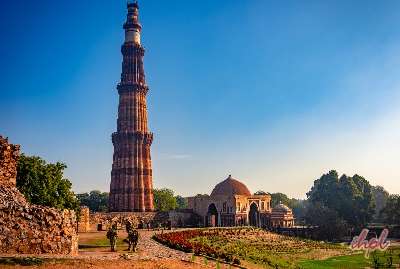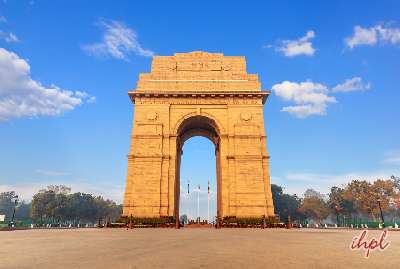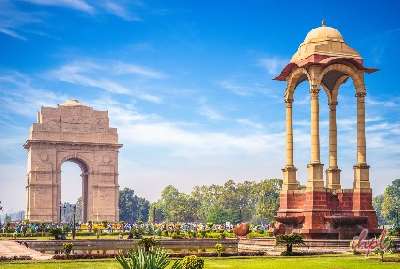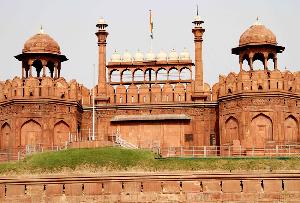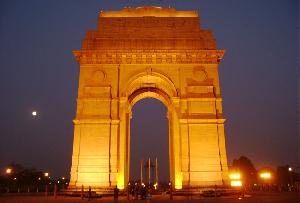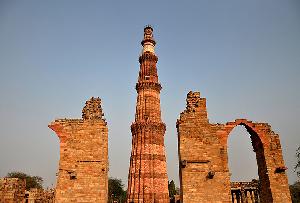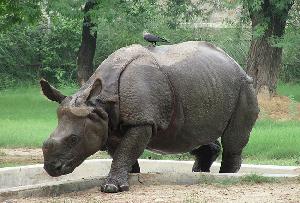William Fraser Bungalow in Old Delhi was constructed in 1803, on the tykhana (cellar) made of Lakhori bricks of Ali Mardan Khan palace, Shah Jahan’s senior general and one of the most important Omrahs in the Mughal Empire. It was the residence of the Deputy Resident of Delhi, Sir William Fraser, who was later appointed as Resident of Delhi.
Description
Presently an administrative office of Northern Railway, William Fraser Bungalow is an off-white colored large domed building situated just behind the holy St James Church. The building comprises of two separate blocks. The first block, a low rectangular building attached to the portico, has four octagonal corner turrets. The second block has a bow-fronted verandah which once faced the Yamuna River.
During the first war of independence, the building was quite damaged. It was repaired later and went on to receive the Heritage Award in 1997, which acknowledged the architectural style of the building and its well maintenance.
History:
William Fraser Bungalow in Old Delhi was constructed in 1803, when British first came to Delhi, on the tykhana (cellar) made of Lakhori bricks of Ali Mardan Khan palace, Shah Jahan’s senior general and one of the most important Omrahs in the Mughal Empire. It was the residence of the Deputy Resident of Delhi, Sir William Fraser, who was known for his likings for Indian social life and his Indian friends. In 1828, Fraser was appointed Resident of Delhi.
Presently an administrative office of Northern Railway, William Fraser Bungalow is an off-white colored large domed building situated just behind the holy St James Church. The building comprises of two separate blocks. The first block is a low rectangular building that leads to the dome chamber that was added later. This block, attached to the portico, has four octagonal corner turrets. The second block, positioned on the far side of the first block, is unique as it has a bow-fronted verandah which once faced the Yamuna River.
During the first war of independence, the building was quite damaged. It was repaired later and went on to receive the Heritage Award in 1997, which acknowledged the architectural style of the building and its well maintenance.
Fast – facts:
William Fraser Bungalow was residence of the Deputy Resident of Delhi, Sir William Fraser, later appointed as Resident of Delhi, and presently is the administrative office of Northern Railway. Following are some fast facts about William Fraser Bungalow –
Location
Located at the intersection of Church Road and Lothian Road, this bungalow is half a km away from Kashmiri Gate and is just behind St. James Church in Old Delhi.
Time to Visit
Open on all days of the year, except Sunday and government holidays. Admission to the bungalow is restricted, and prior permission is required. It takes around 45 minutes exploring this magnificent building.
How to Reach
To reach the William Fraser Bungalow, you can fly down to the Indira Gandhi International Airport in Delhi. You can either avail of local buses from various points within the city to reach the monument, or hire auto-rickshaws and taxis or take the metro rail. The nearest functional Metro station is Kashmiri Gate, while the nearest railway station is the Old Delhi Railway Station.
Nearby Places to Eat
Some of the popular eat-outs near William Fraser Bungalow are Karim Hotel, Ghantewala sweet shop, Paranthewali gali, Natraj hotel, Chor Bizarre of Broadway Hotel, Daryaganj’s Flora, Peshwari, Moti Mahal Restaurant, etc.
Nearby Attractions:
Following are some of the tourist attractions near William Fraser Bungalow –
Kashmiri Gate:
Located near the Inter State Bus Terminal, this was one of the important gates of Shahjahanabad as the royal processions of emperors used to pass through the gate on their trips to Kashmir or northern India.
Dara Shikoh Library:
Constructed by Shah Jahan’s liberal intellectual son and chosen successor, Dara Shikoh, is the Dara Shikoh Library of the Department of Archaeology, Delhi Administration.
St James Church:
Consecrated in 1836, this beautiful church built by the Colonel James Skinner was said to be an imitation of St Paul’s Cathedral in London.
Lothian Cemetery:
Located on Lothian Road, Lothian cemetery is the first British cemetery of Delhi.
Jama Masjid:
The largest mosque of India, built by Shah Jahan, Jama Masjid was originally called Masjid-i-Jahanuma or the Mosque commanding a view of the World.
Chandni Chowk:
One of the oldest and busiest markets in central north Delhi, Chandni Chowk has a variety of shops selling books, clothing, leather goods, electronic goods, etc.
Salimgarh Fort:
Built by Islam Shah Suri, son and successor of Sher Shah Suri, on an island of River Yamuna in 1546.
Raj Ghat:
The most popular memorial in Delhi, Raj Ghat was set up in honor of the Father of the Nation – Mahatma Gandhi.




